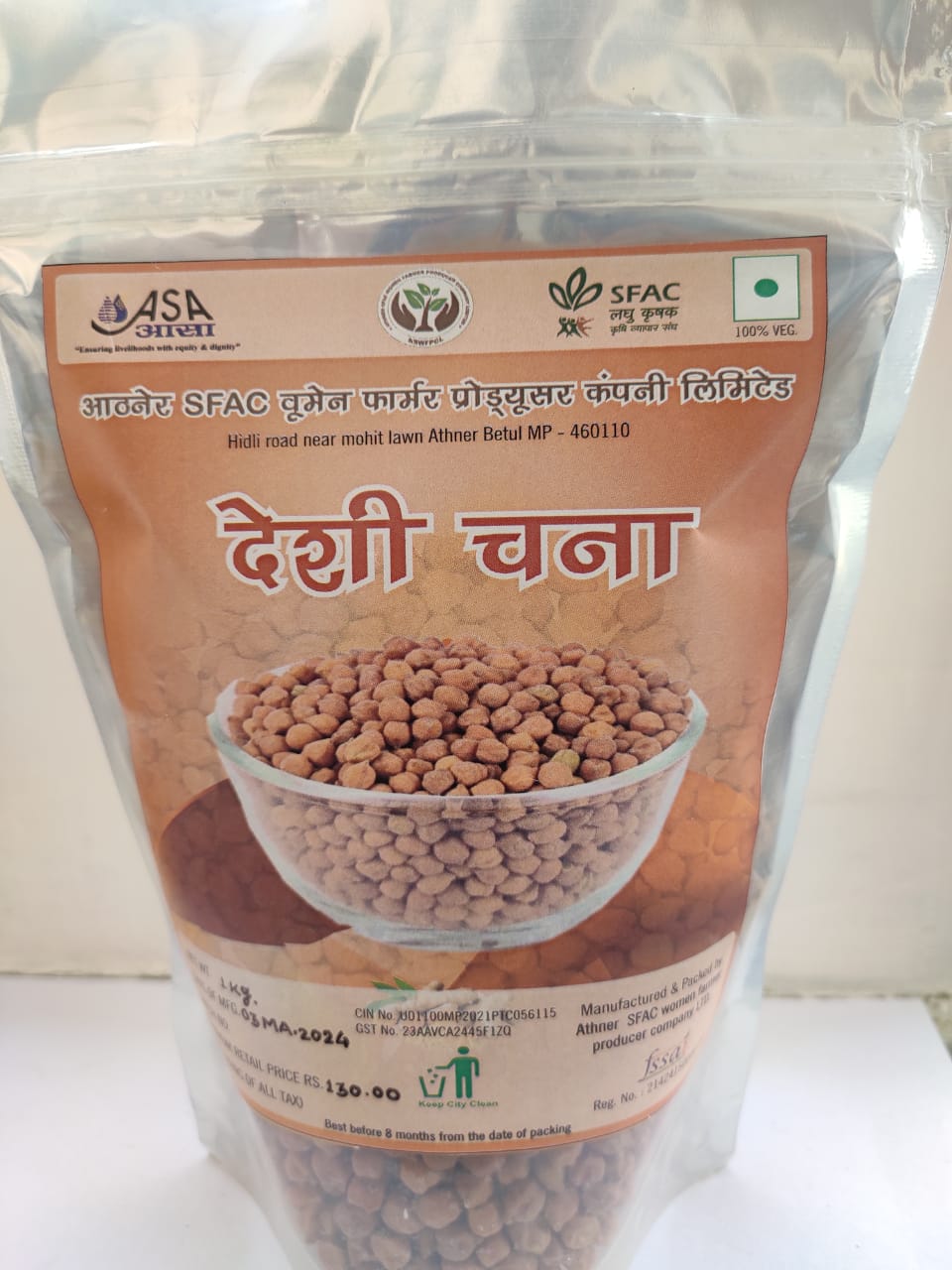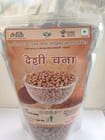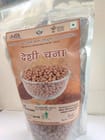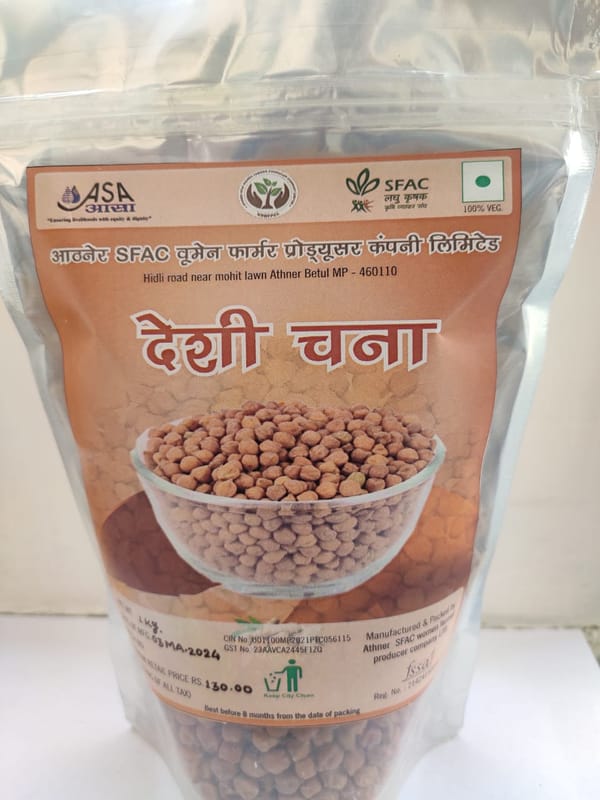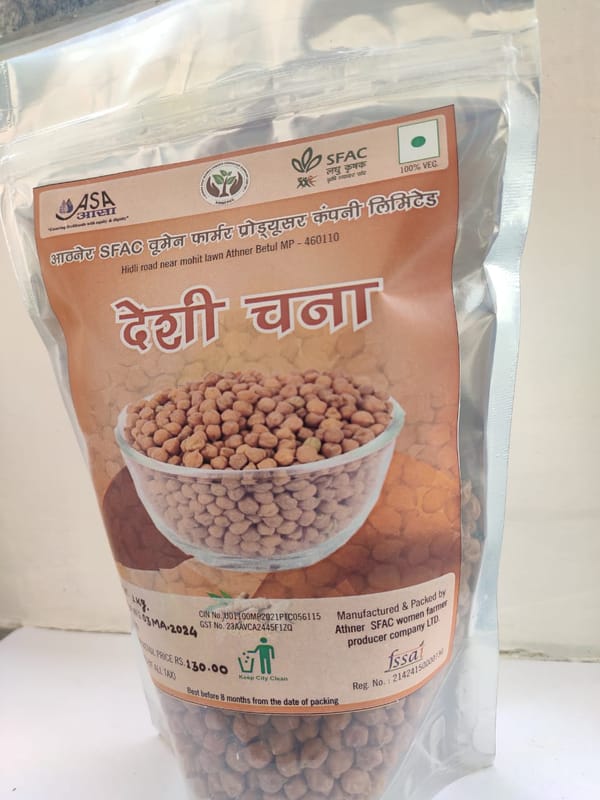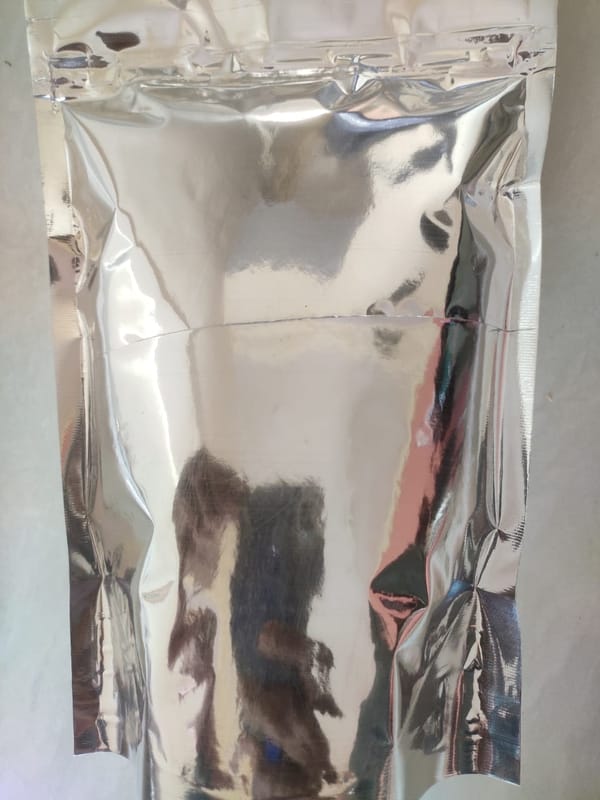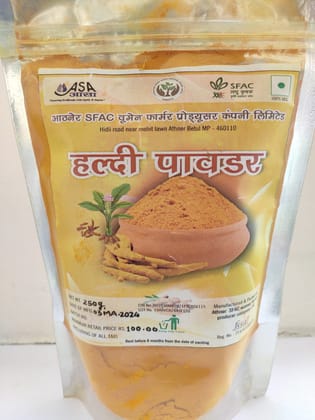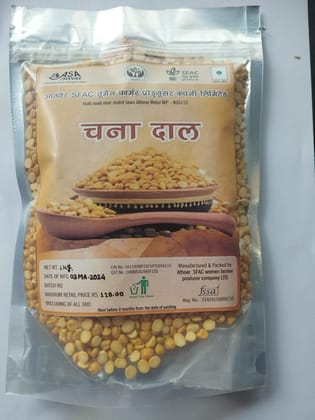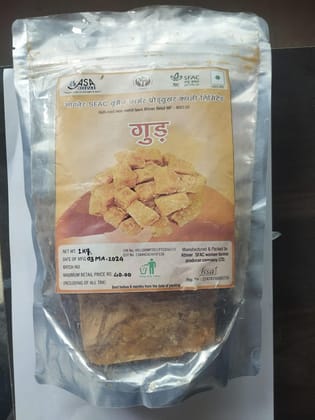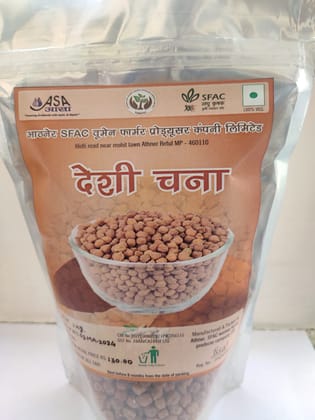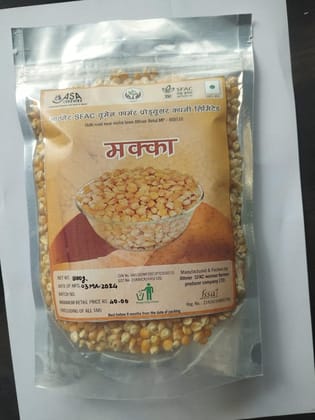| Country of origin | India |
|---|
| Common name | Desi chana |
|---|
| Net Quantity | 1000 gram |
|---|
| Additive info | Salt: Canned or packaged desi chana may contain added salt as a preservative or flavor enhancer. While salt is generally safe in moderation, excessive salt intake can contribute to high blood pressure and other health issues. Opt for low-sodium or no-salt-added varieties if you're watching your sodium intake. Citric Acid: Citric acid is sometimes added to canned chickpeas as a preservative to maintain freshness and acidity. It's generally recognized as safe (GRAS) and is found naturally in citrus fruits. However, some people may be sensitive to citric acid or prefer to avoid it due to dietary restrictions. Calcium Chloride: Calcium chloride is a common additive used in canned foods to help maintain firmness and texture. It's considered safe for consumption and is often used in small amounts. However, some individuals may choose to avoid it due to concerns about processed foods or additives in their diet. Potassium Sorbate: Potassium sorbate is a preservative commonly used in canned or packaged foods to inhibit the growth of mold, yeast, and bacteria. It's generally regarded as safe when consumed in small amounts. However, some people may have sensitivities or allergies to potassium sorbate. BPA (Bisphenol A): BPA is a chemical compound found in some food and beverage containers, including some canned foods. It's used in the lining of cans to prevent corrosion and maintain food quality. While BPA has been linked to potential health concerns, many manufacturers now offer BPA-free canned goods as an alternative. When selecting desi chana, you can opt for fresh or dried chickpeas, which typically do not contain additives. If you prefer the convenience of canned or packaged chickpeas, be sure to read the label carefully and choose products with minimal additives or those that align with your dietary preferences and restrictions. Additionally, rinsing canned chickpeas before use can help reduce the presence of additives and sodium. |
|---|
| Weight | 500 g |
|---|
| Food type | veg |
|---|
| Manufacturer or packer name | Athner SFAC women Farmer producer company LTD |
|---|
| Manufacturer or packer address | Hidli road Athner Dist- Betul MP |
|---|
| Manufacturing Date | 03/2024 |
|---|
| Ingredients | Desi Chana (Black Chickpeas): The main ingredient, about 1 cup (200-250 grams) of dried black chickpeas, soaked overnight or for at least 8 hours. Water: Sufficient water for soaking the chickpeas and for cooking. Spices: Common spices used to flavor desi chana include: Cumin seeds Coriander powder Turmeric powder (Haldi) Red chili powder (or green chilies for heat) Garam masala (a blend of spices) Salt to taste Aromatics: Onion: Finely chopped Garlic: Minced or crushed Ginger: Finely chopped or grated Tomatoes: Fresh ripe tomatoes, diced, or tomato puree for added flavor and moisture. Cooking Oil: Any cooking oil or ghee (clarified butter) can be used for sautéing the aromatics and spices. Optional Ingredients: You can customize your desi chana recipe by adding additional ingredients such as: Fresh cilantro (coriander) leaves for garnish Lemon juice for a tangy flavor Bay leaves or cinnamon sticks for added aroma Coconut milk for richness (especially in South Indian preparations) Yogurt for creaminess These ingredients are commonly used to prepare a flavorful and aromatic dish of desi chana. Adjust the quantities according to your taste preferences and dietary requirements. You can also experiment with other herbs, spices, and vegetables to create variations of the dish. |
|---|
| Nutritional information | Desi chana, or black chickpeas, is highly nutritious and offers a range of health benefits. Here's a breakdown of its nutritional profile per 100 grams: Calories: Desi chana provides approximately 164 calories per 100 grams. Protein: It is an excellent source of plant-based protein, containing around 8.86 grams per 100 grams. This makes it a valuable protein source for vegetarians and vegans. Carbohydrates: Desi chana is relatively high in carbohydrates, providing about 27.42 grams per 100 grams. However, it also contains a significant amount of dietary fiber, which helps regulate blood sugar levels and promote digestive health. Fiber: It is rich in dietary fiber, with approximately 7.6 grams per 100 grams. Fiber aids in digestion, helps prevent constipation, and may reduce the risk of certain chronic diseases such as heart disease and diabetes. Fat: Desi chana is low in fat, with only about 2.59 grams per 100 grams. The majority of the fat content consists of healthy unsaturated fats. Vitamins: It is a good source of several vitamins, including folate (309 mcg per 100 grams), vitamin B6, vitamin C, and vitamin K. Minerals: Desi chana is rich in essential minerals such as iron, phosphorus, magnesium, potassium, and zinc. Iron is particularly abundant, with approximately 4.31 milligrams per 100 grams. This makes chickpeas an excellent food choice for individuals at risk of iron deficiency or anemia. Antioxidants: Chickpeas contain antioxidants such as flavoring and polyphenols, which help protect cells from damage caused by free radicals and oxidative stress. Other Nutrients: Desi chana also provides smaller amounts of other nutrients like calcium, manganese, copper, and selenium. Overall, desi chana is a nutrient-dense food that can be a valuable addition to a balanced diet. Incorporating it into meals can help promote overall health and well-being, especially when combined with a variety of other nutritious foods. |
|---|
| Instructions | Instructions: Soaking: Rinse the dried desi chana under cold water to remove any debris. Place them in a large bowl and cover with water. Allow the chickpeas to soak overnight or for at least 8 hours. Soaking helps soften the chickpeas and reduces cooking time. Drain and Rinse: After soaking, drain the chickpeas and rinse them thoroughly under cold water. |
|---|
| Storage conditions | Dried Desi Chana: If you have dried desi chana, store them in an airtight container or resealable plastic bag in a cool, dry place. Keep them away from moisture, heat, and direct sunlight, as exposure to these elements can cause the chickpeas to spoil more quickly. A pantry or kitchen cabinet is an ideal storage location. Cooked Desi Chana: If you've cooked desi chana and have leftovers, store them in a covered container in the refrigerator. Allow the cooked chickpeas to cool completely before transferring them to the container. Consume the cooked chickpeas within 3-4 days to ensure freshness and quality. Freezing: You can also freeze cooked desi chana for longer-term storage. Allow the cooked chickpeas to cool completely, then transfer them to airtight freezer bags or containers. Label the containers with the date and store them in the freezer. Frozen cooked chickpeas can last for several months. To use them, thaw them overnight in the refrigerator before reheating. Avoid Moisture: Whether storing dried or cooked desi chana, it's essential to keep them away from moisture to prevent mold growth and spoilage. Make sure the storage containers are completely dry before adding the chickpeas. Check for Spoilage: Periodically check the desi chana for any signs of spoilage, such as mold, off odors, or changes in texture or color. If you notice any signs of spoilage, discard the chickpeas immediately. By following these storage guidelines, you can keep your desi chana fresh and flavorful for longer, whether they're dried or cooked. Proper storage helps maintain their quality and ensures that they're safe to consume. |
|---|
| contact details consumer care | ATHNER SFAC WOMEN FARMER PRODUCER COMPANY LIMITED, [email protected] |
|---|
